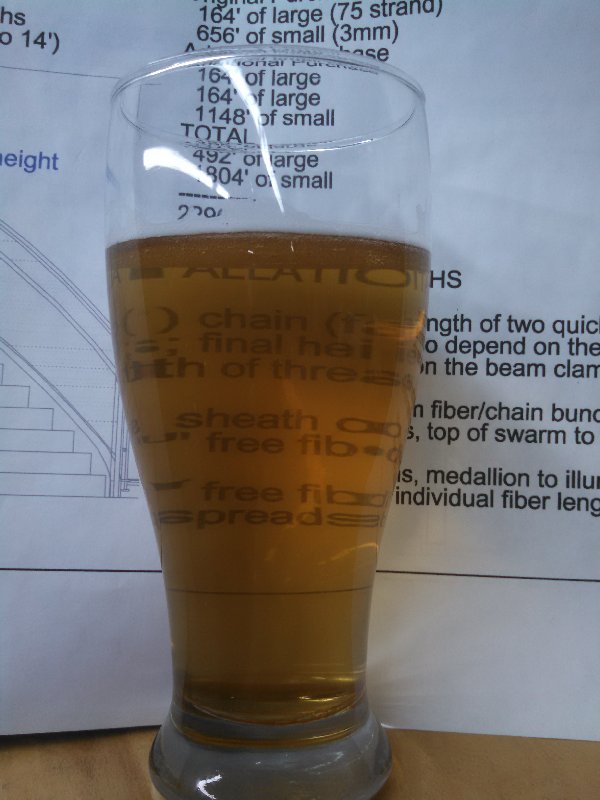- Joined
- Jun 29, 2014
- Messages
- 516
- Reaction score
- 50
Hi,
I dont brew much anymore because of the time investment. My brew days are a minimum of 6 hours, I have a 3V gas system with pumps and I clean as I go, and measure water the night before. I recently bought a 20 gal kettle because with 90 minute boils I wasn't able to boil all the wort for a 10 gal batch with my 15 gal keggles. I also make cold brew coffee a keg at a time so I have strainer bags and considered trying a BIAB batch since I have the equipment.
It seems to me though that there are some concepts in play with BIAB which contradict the typical 3V system.
1. Circulating the mash to get clearer wort into the kettle and less tannin's
2. Fly sparge slowly for efficiency
3. Mashing out and sparging with 168 degree water to make the sugar more fluid
4. Not creating channels in the grain while sparging
BIAB:
-People are talking about squeezing the bag to gain efficiency, which seems to contract points 1&2. I think I'd rather just add 10% more grain than squeeze the bag.
-All grain brewers used aim for clear wort into the kettle but with BIAB I dont see this as easily possible.
-Sparging is basically non existent
I keep reading brewers saying that you can make the same quality beer with BIAB versus a 3V and it makes me wonder now, if none of that other stuff was ever necessary?
Thanks,
David
I dont brew much anymore because of the time investment. My brew days are a minimum of 6 hours, I have a 3V gas system with pumps and I clean as I go, and measure water the night before. I recently bought a 20 gal kettle because with 90 minute boils I wasn't able to boil all the wort for a 10 gal batch with my 15 gal keggles. I also make cold brew coffee a keg at a time so I have strainer bags and considered trying a BIAB batch since I have the equipment.
It seems to me though that there are some concepts in play with BIAB which contradict the typical 3V system.
1. Circulating the mash to get clearer wort into the kettle and less tannin's
2. Fly sparge slowly for efficiency
3. Mashing out and sparging with 168 degree water to make the sugar more fluid
4. Not creating channels in the grain while sparging
BIAB:
-People are talking about squeezing the bag to gain efficiency, which seems to contract points 1&2. I think I'd rather just add 10% more grain than squeeze the bag.
-All grain brewers used aim for clear wort into the kettle but with BIAB I dont see this as easily possible.
-Sparging is basically non existent
I keep reading brewers saying that you can make the same quality beer with BIAB versus a 3V and it makes me wonder now, if none of that other stuff was ever necessary?
Thanks,
David




